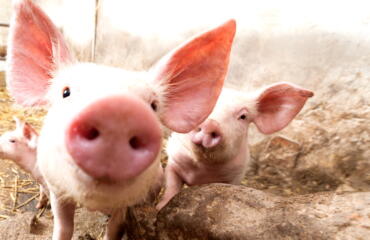
Common or garden: galls swell in citrus tree branches as nutrients are diverted to the wasp larvae.
Citrus gall wasp, which lays its eggs in the branches of lemon, lime and orange trees with often lethal effect, has been a steadily growing problem for citrus growers and suburban green thumbs in Victoria for more than a decade.
Although the infestation is at one of its highest peaks in 15 years, experts say the gall wasp can be kept at bay with sticky traps and heavy pruning.
Pauline Watt, a horticulturist at Fitzroy Nursery, explained that the sticky traps contain a pheromone, which is released when the trap is opened up.
“A scent is released that [the wasps] are attracted to . . . [encouraging] them to head towards it and get stuck, which then stops them from infecting the tree further.”

The traps, which cost around $10, are available year-round but are best used from August to January when hatching begins and the wasps are most active.
Elyssia Hicks, an employee at one of Australia’s leading homeware and outdoors stores, said the best approach for suburban gardeners was to hang the traps in the trees, especially in younger plants which are more vulnerable to the wasp due to their softer stems.
Pruning can also be quite effective and is essential for controlling the gall wasp. Trimming affected areas and destroying them by burning or by bagging them up and putting them in the garbage bin can help restrict the spread of the wasp.
“You just have to cut [the galls] out,” said Ms Watt. “It doesn’t really matter where you chop. Some people take their citrus trees down to just a stick and it will still come back. They respond really well to being pruned. That’s all you can do.
“If you’ve had gall wasp before, you can see little holes from where [the wasps] have emerged. If there are holes then you can leave those galls in your tree. If you see new galls, which will be little bumps in the softer, newer growth, due to it being easier for the wasps to burrow into, removal and disposal is the only way,” said Ms Watt.
Another possibility for combatting the gall wasp is to use a parasite. However, Jim Kremar, an employee at Poyntons Nursery in Essendon, said there was no current plan to make the predator available in Victoria.
“The parasitic insect lays its eggs into the gall wasp eggs, killing them just as they start to hatch. This results in fewer and smaller galls. At the moment it seems there are no current plans to cultivate and sell the parasitic insect in Victoria [but] there are Queensland suppliers that will express post them to Victoria.”
With no predator locally available in Victoria, nurseries are urging citrus owners to be aware of the gall wasp problem and take action as soon as possible.
Mr Kremar suggests that Victorians should also examine the lemon trees of their neighbours.
“If they are infected with galls, it means yours will most likely become infected too: so chat to your neighbour about the issue.”
The infestation, if ignored, can weaken the tree and cause it to produce less and less fruit. However, a tree will continue to produce fruit despite the gall if there is only a minimum amount of infection.
The gall wasp eggs are usually found in the newer, softer growth of citrus trees, as it is easier for the wasps to burrow into the wood to lay their eggs. While the larvae are growing within the gall, nutrients are diverted from the tree causing production of fruit to decline.
“The combination of citrus plants being imported from Queensland to the southern states has greatly assisted [the wasps] to travel, while the slowly rising effects of climate change have given the gall wasp warmer weather in Victoria, which it now thrives in.” — Jim Kremar, of Essendon’s Poyntons Nursery
Mr Kremar explained that an adult wasp will lay eggs within the stems of the tree. “Over time, these eggs hatch and as the pupae grow within the stems, the tree develops the large swelling lumps, which turn into galls. After the new wasps burrow out of the stems they fly to another spot on the tree and lay more eggs, repeating the infestation.”
Wasps start hatching from trees during the summer months when the wasps are most active. However, being poor flyers, the insects generally settle on the one tree unless caught by the wind and carried to a neighbouring tree.
Mr Kremar said that the wasp had been plaguing citrus trees in Victoria since the 1990s and had grown into a large population over the last decade due to warmer temperatures and interstate imports.
“The combination of citrus plants being imported from Queensland to the southern states has greatly assisted [the wasps] to travel, while the slowly rising effects of climate change have given the gall wasp warmer weather in Victoria, which it now thrives in.”
Save Our Citrus, a Melbourne-based community group, is hoping that by informing more people about the severity of the wasp, Victorian citrus trees can be saved.
“If we all prune by late August and destroy infected material correctly we can reduce the spread of citrus gall wasp,” the group declares in its information material.
Inner city councils, including Darebin and Banyule, have also joined with Save Our Citrus and have launched community forums to advise citrus owners on how to protect and care for their trees.
Ms Watt said homeowners keeping a close check on their trees would go a long way to combating the wasp invasion. She added that Victorians should “keep the trees healthy and try and talk to neighbours to make sure they keep their trees healthy, too.”



